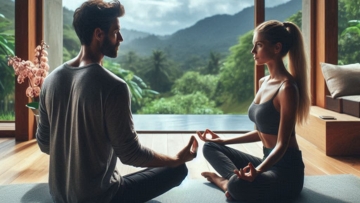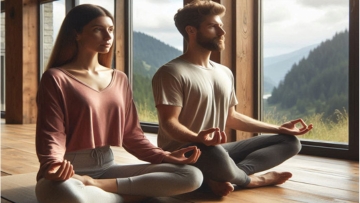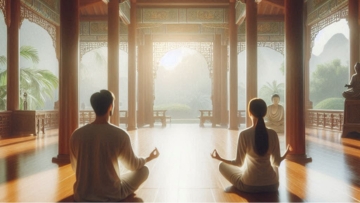Meditation Daily

The Ultimate Guide to Meditation for Beginners: In today’s fast-paced world, stress and anxiety can feel unavoidable, making the search for inner peace more essential than ever. Meditation has been practiced for thousands of years as a proven method for reducing stress, enhancing well-being, and fostering inner calm. Whether you’re looking to relieve stress, improve mental clarity, or simply find a sense of peace, this guide will introduce you to the fundam...

For Lasting Stress Relief and Inner Peace: In an ever-busy world, finding ways to relieve stress and achieve inner peace is essential. One of the most effective and time-tested solutions is meditation. Far from being just a relaxation technique, meditation is a powerful practice that can transform your mind, reduce stress, and cultivate lasting peace. This article explores the transformative power of meditation, highlighting techniques that can help you build a sustain...

From Overwhelmed to Calm: In today’s fast-paced world, stress seems to be an unavoidable part of daily life. With busy schedules, high expectations, and endless demands, it’s no wonder many people feel overwhelmed. But amidst the chaos, there’s a powerful tool that can bring peace and balance back into your life: meditation. By practicing meditation, you can learn to manage stress more effectively, find inner calm, and face life’s challenges wit...

A Powerful Tool for Stress Relief: Meditation has long been hailed as a powerful method for reducing stress, improving focus, and promoting overall well-being. However, an often-overlooked aspect of meditation is the central role that breathing techniques play in enhancing these benefits. By learning and practicing specific breathing techniques during meditation, you can achieve a greater sense of calm, manage anxiety, and even enhance your emotional resilience. This g...

Reduce stress in 5 simple steps: In today’s fast-paced world, stress has become an almost unavoidable part of life. While some stress is natural, chronic stress can harm your mental and physical well-being. One of the most effective ways to combat stress is through meditation. With just a few minutes each day, you can start to feel calmer, more centered, and better equipped to handle life’s challenges. The best part? It’s easier than you might think t...